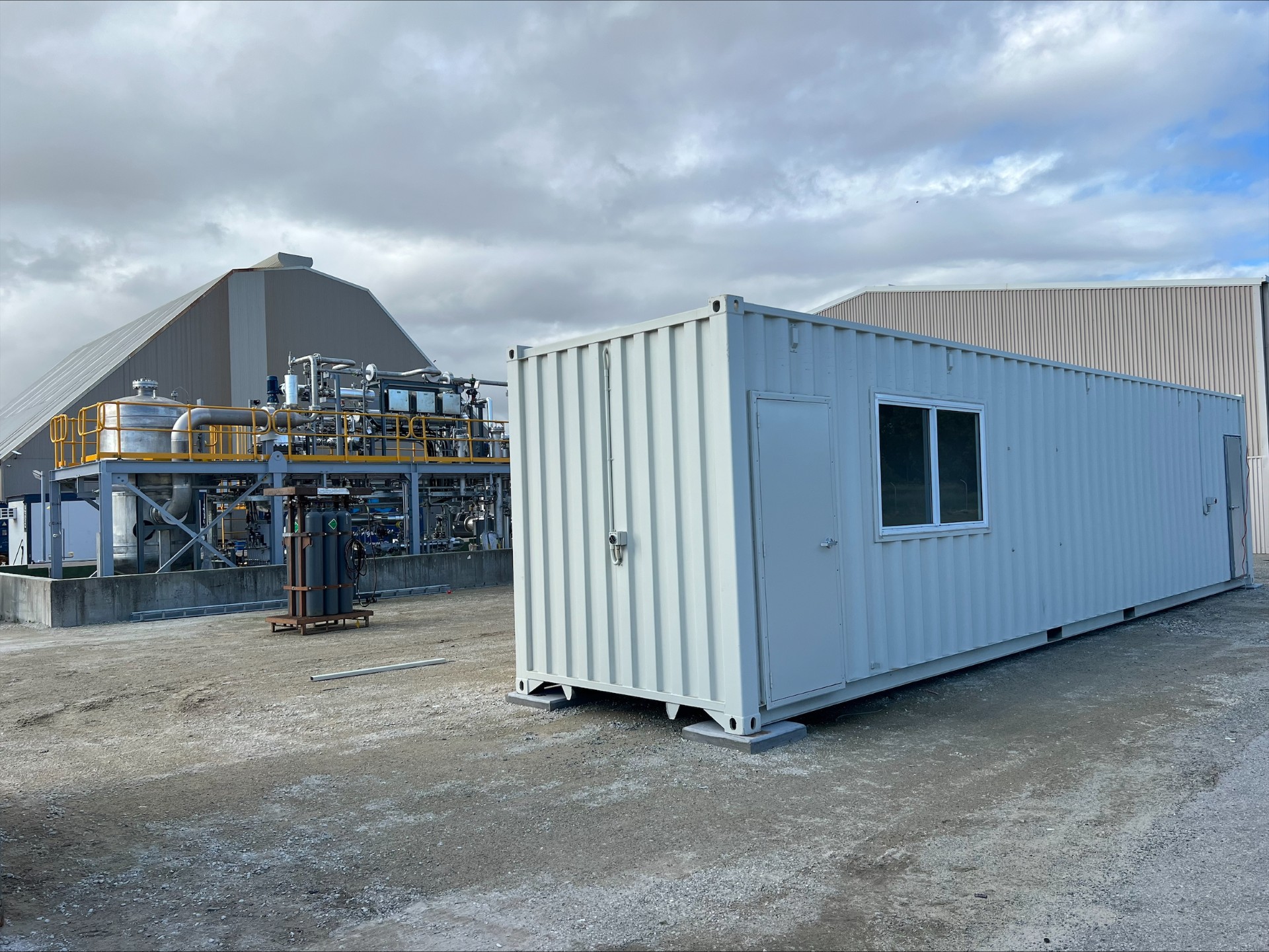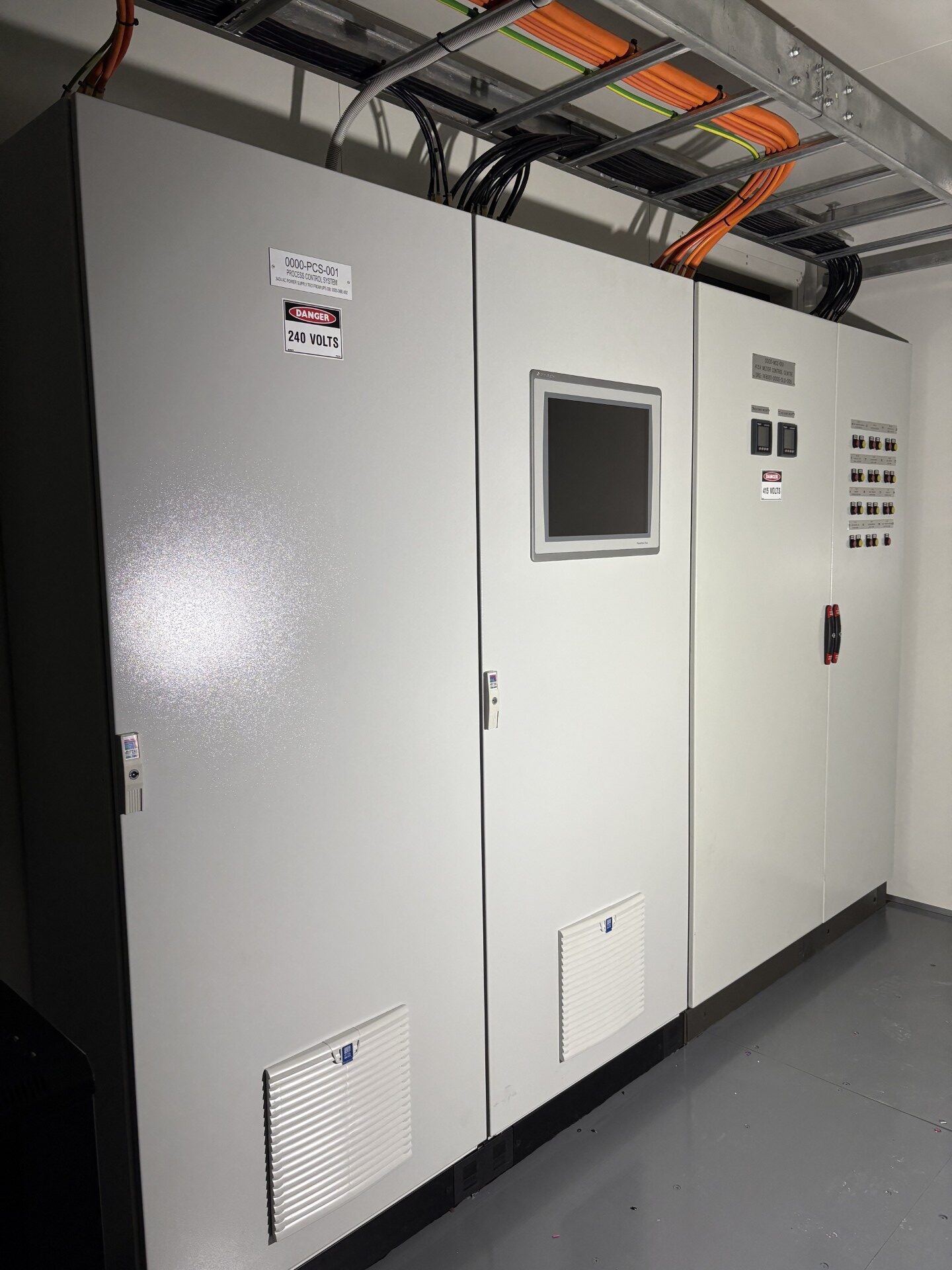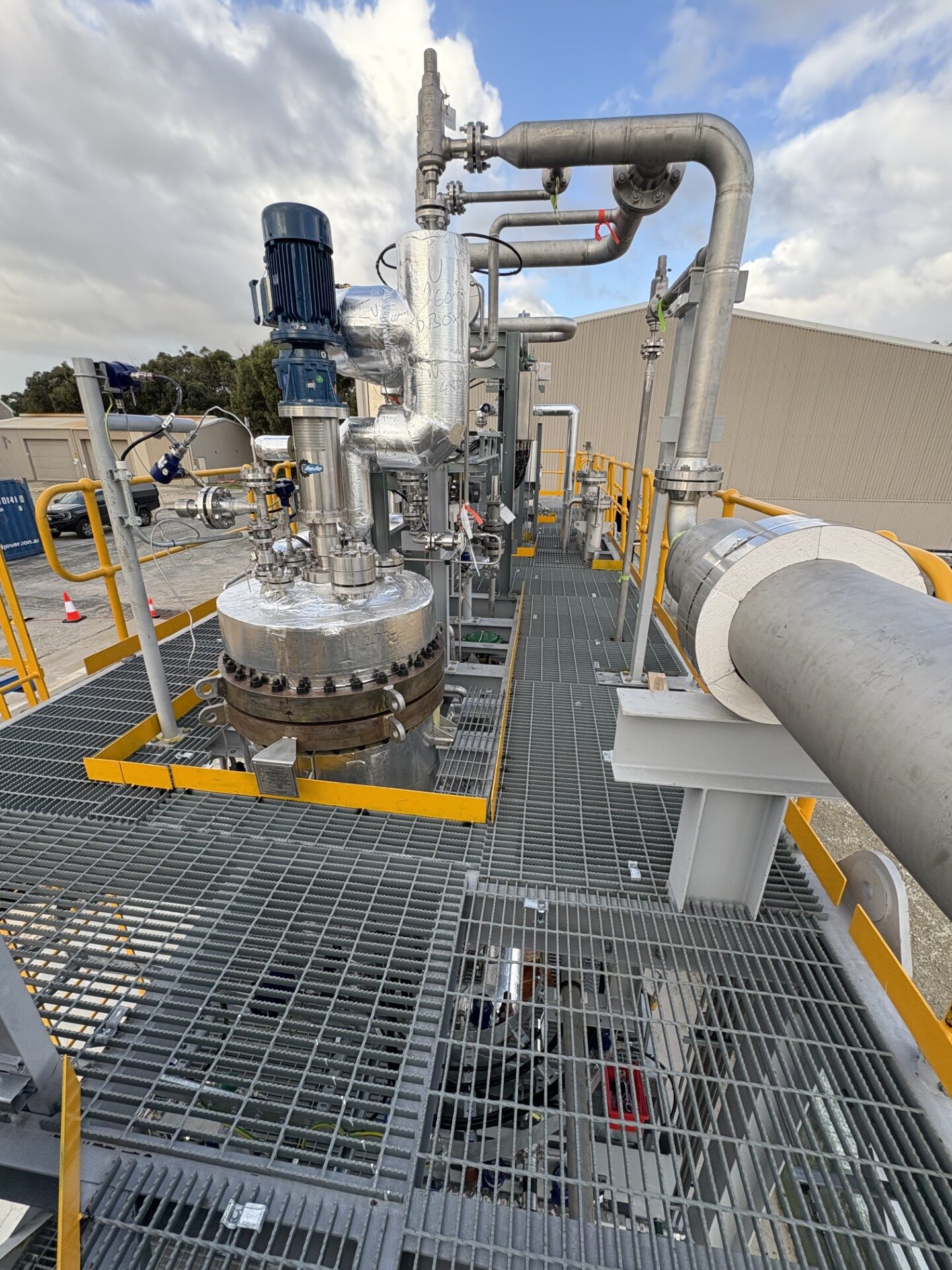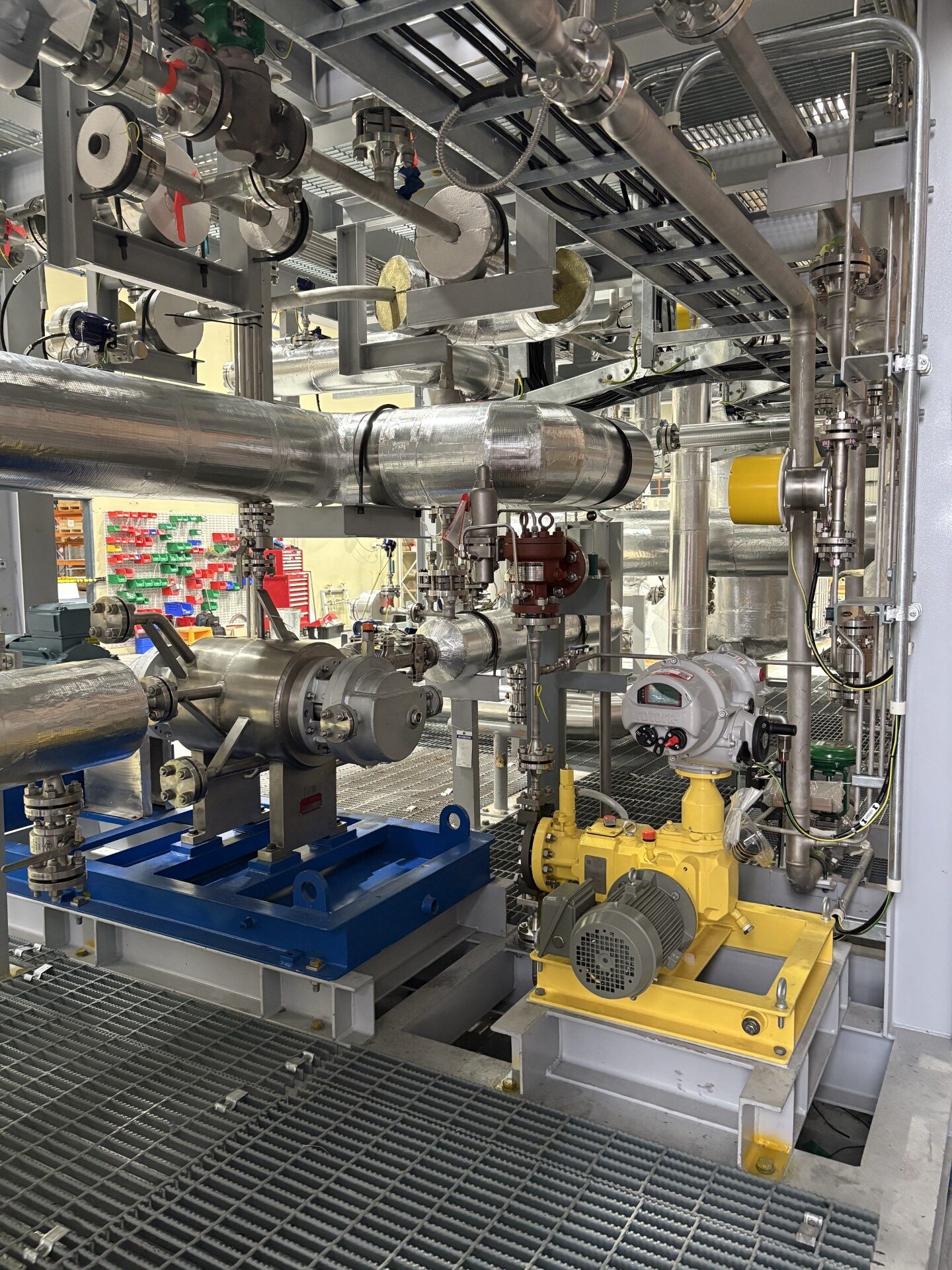This week saw the arrival and integration of crucial components of the Hydrilyte® Technology, bringing us ever closer to the HTP’s operational launch in August. As seen in the photos below, the new controls container has been successfully installed. This unit is the brain of our operation, housing the sophisticated systems that will monitor and manage every aspect of the Hydrilyte® process.
Working with valued partners
We believe in the power of collaboration, and the progress we’re making wouldn’t be possible without the exceptional work of our trusted partners. We want to extend our sincere gratitude to:
Aussie Fluid Power (Mechanical Engineering), for their outstanding mechanical engineering expertise, ensuring the robust and precise assembly of the HTP’s intricate components.
I&E Systems Pty Ltd (Controls and Instrumentation) – for their critical work on the controls and instrumentation, which will enable the seamless and intelligent operation of the pilot plant.
Imperium Engineering (Electrical Engineering) – for their vital contributions to electrical engineering, ensuring the safe and efficient power distribution throughout the facility.
What’s Next?
With these key components now in place, our focus intensifies on the upcoming commissioning phase in July. This is where all the individual systems will be brought online, tested, and optimised to ensure the HTP is fully prepared for operations to commence in August.



